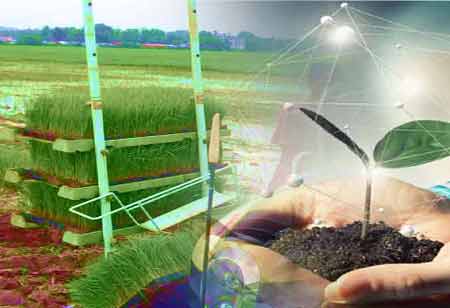Thank you for Subscribing to Agri Business Review Weekly Brief
Significance of Irrigation Systems
Water is essential to the survival of all living things.

By
Agri Business Review | Tuesday, January 03, 2023
Stay ahead of the industry with exclusive feature stories on the top companies, expert insights and the latest news delivered straight to your inbox. Subscribe today.
Every living creature relies on water to survive. Farmers are now looking for new watering systems for their farmlands due to climate change, and these new systems are called irrigation systems.
FREMONT, CA: Water is essential to the survival of all living things. As a result of global climate change, farmers can no longer rely solely on rainfall and have begun searching for irrigation systems to hydrate their farmlands. While rain-fed agriculture is the natural application of soil through direct precipitation, irrigation is the artificial application of soil through various watering techniques.
IMPORTANCE OF IRRIGATION SYSTEMS
Saves Lives During Droughts: An irrigation system could rescue your farmland with no precipitation. With irrigation, the global food production rate is sufficient.
It's Successful: When crops or plants are watered inconsistently, inaccessible places may need more water. However, a well-designed irrigation system transmits all the water the plants require and boosts plant output.
It contributes to economic expansion: Regardless of the temperature and weather circumstances, irrigation ensures that food production continues. Continued food production provides continued revenue and employment. A significant income increase indicates a strong economy. Consequently, irrigation also contributes to the economic development of nations.
IRRIGATION SYSTEM TYPES
There are too wide varieties of irrigation worldwide, and the correct method must be chosen based on the soil type, climate, crop, and available resources.
Drip Irrigation
Flow irrigation, also known as trickling irrigation, comprises a system that allows water to drip to the roots of plants through small tubes slowly. This approach enables water to be transported directly to the roots of plants. Its great water-saving efficiency cuts water consumption while stunting crop growth. It will be most efficient for crops planted in lines or rows. After system installation, the irrigation method saves time and effort. Additionally, it minimizes fungal disease by reducing water contact with the plant's leaves, stems, and fruits.
Sprinkler Irrigation
In sprinkler irrigation, high-pressure or guns transport water to the field's core regions. These sprinklers or cannons may also be put on hose-connected mobile platforms. This irrigation is appropriate for watering lawns, golf courses, crops, and landscaping. However, drip irrigation is less successful than drip irrigation because the water does not reach the roots directly and uses more water than drip irrigation.





